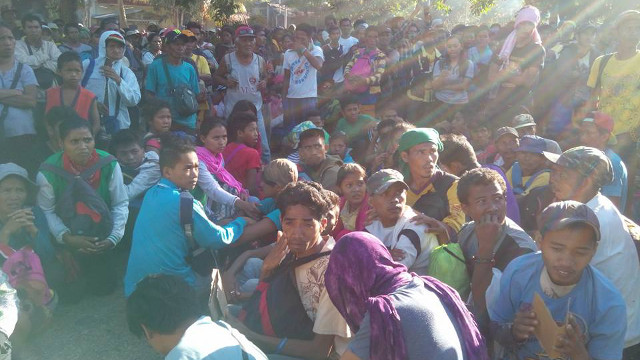
The farmers whose crops in Kidapawan were destroyed by the near record El Niño which has struck the country highlight a dangerous tendency by the agriculture department under Secretary Proceso Alcala.
Last month, the department issued a release declaring the impact of the El Niño hitting the country as “negligible.”
I have been writing and following El Niño for over 30 years. Nothing about this El Niño is negligible.
Kidapawan showed the impact is a lot worse than the government is admitting. The farmers were starving because of El Niño. Is that negligible?
By consistently shading the truth or avoiding it, Alcala and his cohorts in the government should be partly blamed for the bloodshed in Kidapawan.
The Pagasa weather bureau said at one point up to 21 provinces were under drought. That is misleading.
Pagasa defines a dry spell as three consecutive months of rainfall 21 to 60 percent below normal. A drought is when the number tops 60 percent.
What’s the difference in the number? Preciously nothing.
Worst in recorded history
Dry spell/drought? It doesn’t matter for a farmer who depends on rain-fed irrigation. His crops wither and die.
One has to remember something about this El Niño. It is the strongest since 1997/98, which just happens to be the worst in recorded history.
The government says they have taken measures and the releases by the agriculture department kept emphasizing the preventive steps they have taken to mitigate its impact.
The department also kept harping that the country is close to achieving rice self-sufficiency. (READ: DA: We did enough for drought-affected Soccsksargen farmers)

Philippine rice yields are stagnant at around 4 tonnes/hectare. In fact, it slipped to 3.9 tons/hectare in 2015, the Bureau of Agricultural Statistics said.
Land planted to rice is around 4 million hectares scattered across the country of over 7,000 islands.
Vietnam plants about 7 million hectares and Thailand sows 10 million hectares.
Given the slow adoption of new rice technology, shrinking farm land from urbanization and a swiftly growing population which is going to approach 110 million in a few years’ time – rice self-sufficiency is a Sisyphean task in the Philippines.
Now if you combine a near record El Niño with the average 20 typhoons which sweep into the Philippines every year, getting the country to produce enough rice becomes even more daunting.
The typhoon season in the Philippines normally runs into early October. The biggest rice crop in the country is harvested in the last quarter of the year.
Facts on the ground
Since 2012 though, out-of-season typhoons have regularly hit the country, with powerful typhoon Haiyan/Yolanda demolishing Tacloban in November 2013 before ravaging all of Leyte and then Iloilo, all major rice growing areas.
So when typhoon Koppu/Lando barreled into the country last October, the damage to the major rice harvest especially on the main growing island of Luzon was in the words of an agricultural attache in Manila “extensive.”
Are all these late season storms related to climate change and an extra-warm ocean that spawns more powerful storms later in the year? For me, yes.
Even then, the government sought to downplay the hit by Koppu/Lando.
The facts on the ground say otherwise. By the end of the year, the Philippines has imported over 2 million tonnes of rice in 2015, the highest in several years.
Rice imports in 2016 are now approaching 1 million tonnes with the vagaries of the typhoon season yet to come.
Since El Niño will not completely dissipate until the end of June, the already bone-dry rice farms across the country will simply not get any relief.
This is especially true since most water in the country’s dams are often allocated to the influential and politically powerful cities clustered around Metro Manila.
The plain implication if we may see more Kidapawans in the weeks to come.
The sooner the government realizes the Philippines cannot produce enough rice and is better off importing the staple food from Thailand, Vietnam, India and the United States, the better.
Farmers in the Philippines would be better off being given support and training to grow other crops.
Kidapawan is a failure of agriculture policy where the inability of the agriculture department and other parts of the government to come clean on El Niño resulted directly in lives being lost. – Rappler.com
Rene Pastor is a journalist in the New York metropolitan area who writes about agriculture, politics and regional security. He was, for many years, a senior commodities journalist for Reuters. He founded the Southeast Asia Commodity Digest, which is an affiliate of Informa Economics research and consulting. He is known for his extensive knowledge of the El Niño phenomenon and his views have been quoted in news reports. He is currently an Online Editor of the international edition of the South China Morning Post in Hong Kong.